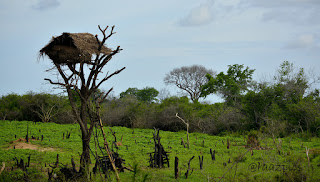What are the Sustainable Development Goals?
Today the world is more connected with more technology than other segments.
The United Nations’ Sustainable Development program /Agenda, adopted in year 2015, includes 17 sustainable development Goals (SDGs) to be achieved by 2030. Countries around the world have committed to taking action to meet these goals, such as ending hunger and poverty, creating sustainable cities and communities, and making health care available to all.
As responsible citizens we should have a thorough understanding on following aspects
1. Who developed SDGs? UNDP or United Nations Development Program
2. How many goals are there in that program? 17 Goals
3. Which year the SDGs are to be achieved? 2030
4. Which goal is more relevant to Agriculture? Goal 2 : Zero Hunger
5. What is the name of the previous program to the SDG and how many goals it had? Millenium
Development Goals (MDG) and it had seven (7) goals
Background on the goals
The Sustainable Development Goals
(SDGs) were born at the United Nations Conference on Sustainable
Development in Rio de Janeiro in 2012. The objective was to produce a
set of universal goals that meet the urgent environmental, political and
economic challenges facing our world.
The SDGs replace the Millennium Development Goals (MDGs), which started a global effort in 2000 to tackle the indignity of poverty. The MDGs established measurable, universally-agreed objectives for tackling extreme poverty and hunger, preventing deadly diseases, and expanding primary education to all children, among other development priorities.
For 15 years, the MDG drove progress in several important areas: reducing income poverty, providing much needed access to water and sanitation, driving down child mortality and drastically improving maternal health. They also kick-started a global movement for free primary education, inspiring countries to invest in their future generations. Most significantly, the MDGs made huge strides in combatting HIV/AIDS and other treatable diseases such as malaria and tuberculosis.
Watch how the UNDP led world leaders shift from MDG to SDGs. Video
The SDGs replace the Millennium Development Goals (MDGs), which started a global effort in 2000 to tackle the indignity of poverty. The MDGs established measurable, universally-agreed objectives for tackling extreme poverty and hunger, preventing deadly diseases, and expanding primary education to all children, among other development priorities.
For 15 years, the MDG drove progress in several important areas: reducing income poverty, providing much needed access to water and sanitation, driving down child mortality and drastically improving maternal health. They also kick-started a global movement for free primary education, inspiring countries to invest in their future generations. Most significantly, the MDGs made huge strides in combatting HIV/AIDS and other treatable diseases such as malaria and tuberculosis.
Watch how the UNDP led world leaders shift from MDG to SDGs. Video
Read More
http://www.undp.org/content/undp/en/home/sustainable-development-goals.html



Nice Information on Sustainable farming
ReplyDeleteThank you for sharing this blog. Sustainable Agriculture"
ReplyDeleteYour blog offers a clear and informative overview of the Sustainable Development Goals (SDGs), making it accessible for readers unfamiliar with the topic. The structure is well-organized, starting from the origin of SDGs to their relevance in today's global context. Highlighting key questions such as the number of goals, the target year (2030), and the transition from the Millennium Development Goals (MDGs) helps reinforce essential facts. The inclusion of Goal 2: Zero Hunger and its relevance to agriculture adds practical value, especially for readers in sectors tied to food security and rural development. You’ve also successfully connected the evolution from MDGs to SDGs, showing global progress and challenges ahead. To enhance engagement, consider adding a brief example of how individuals or communities can contribute to the SDGs. Overall, this is a well-written and thoughtful piece that encourages awareness and responsibility toward sustainable development.
ReplyDeleteThis is a clear and informative overview of the SDGs and their importance in today’s interconnected world. I appreciate the focus on Goal 2—Zero Hunger—as it highlights agriculture’s key role in sustainable development with agro formulations. Understanding our global commitments helps us act more responsibly as citizens. Great summary of both SDGs and their MDG roots!
ReplyDeletethanks for sharing
ReplyDelete